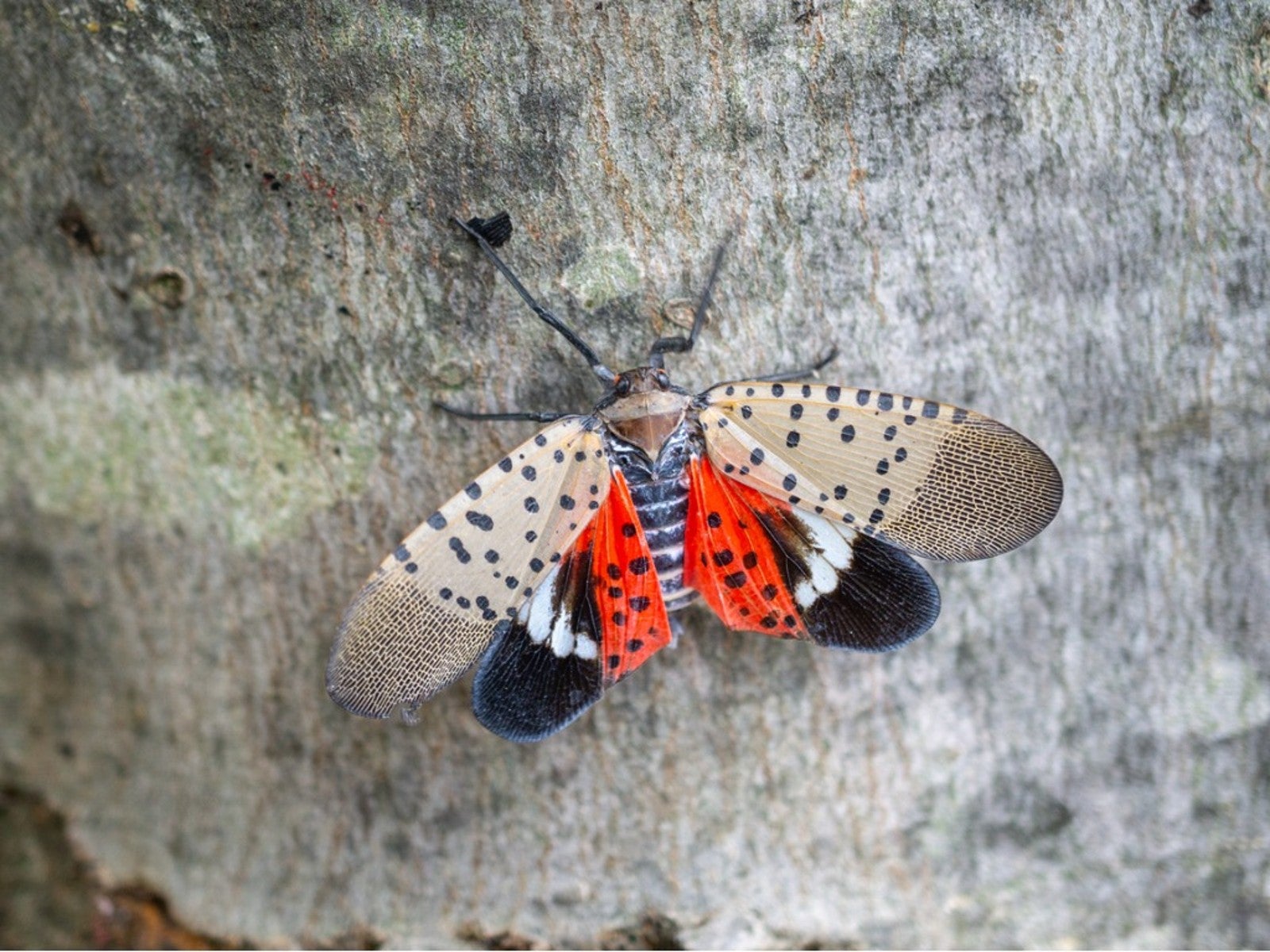
If you see wilting, branch death, flagging of trees and vines combined with honeydew and accompanying sooty mold, you’re probably looking at Spotted Lanternfly damage. Controlling Spotted Lanternflies is important, as both adult and immature nymph Spotted Lanternfly bugs feed on vines, fruit trees and many hardwoods causing much damage. Of course the question is how to get rid of Spotted Lanternflies. Read on to learn about Spotted Lanternfly control.
What are Spotted Lanternfly Bugs?
While the adults look like a rather pretty moth, Spotted Lanternflies are not moths or flies, but are insects in the order Hemiptera, which includes cicadas and hoppers.
Spotted Lanternfly bugs are easily identifiable. Black juveniles with white spotting hatch in the spring. As they mature, these nymphs become red and black with white polka dots.
In late July-August, the nymhs mature into adults. Adults are rather pretty with black heads, grey/black forewings and reddish black spotted rear wings. Adults stick around until frost and feed in large groups from August through October. In the last month, they mate and lay eggs.
The egg masses are laid on smooth surfaces such as tree bark and look like a smear of mud.
Spotted Lanternfly Damage
Spotted Lanternfly bugs feed on over 70 species of plants. They suck fluids from the plant, not from the fruit or leaf tissue, but from the trunk and limbs along the leaf veins.
Where they feed and in what abundance rotates, and it appears to be tied to sugar flow in the trees. During feeding they excrete honeydew which in turn feeds the sooty mold fungus. Sooty mold reduces the plants ability to photosynthesize and results in low plant vigor.
Sign up for the Gardening Know How newsletter today and receive a free copy of our e-book "How to Grow Delicious Tomatoes".
Adults feed in large numbers and can cause serious damage in both the agricultural and home garden.
How to Get Rid of Spotted Lanternflies
Spotted Lanternfly bugs are susceptible to several insecticides. However, care must be used with soil drench insecticides on landscape trees that provide pollen and nectar sources for bees in the spring.
There are other methods for controlling Spotted Lanternflies that have less potential for harm. For instance, one method of Spotted Lanternfly control is with the use of naturally occurring fungi and or beneficial insects. The problem here is that the impact of biological organisms has not been studied. Primarily, Spotted Lanternfly control is accomplished through the removal of egg masses and insecticide management.
Spotted Lanternfly Mechanical Control
The most effective mechanical control is to remove the egg masses. Adults begin laying eggs in October up to the first few hard frosts. The masses look like muddy areas on trees, rocks, and manmade items and are covered with a gray wax. Start looking for the egg masses, and remove them with a rigid item such as a putty knife or credit card. Drop the egg mass in a solution of rubbing alcohol as you go.
Another method for controlling Spotted Lanternfly is tree banding, wherein a tree infected with nymphs is wrapped with a sticky trap. Beginning in April, place bands that are at least 6 inches (15 cm.) wide at chest height. Push pins can help to secure the band. Bands should be replaced every two weeks until the end of July.
Tree of Heaven is the Spotted Lanternflies' favorite food source. Controlling Spotted Lanterfly on Tree of Heaven often requires multiple control methods including chemical and mechanical controls.
Note: Any recommendations pertaining to the use of chemicals are for informational purposes only. Chemical control should only be used as a last resort, as organic approaches are safer and more environmentally friendly.

Amy Grant has been gardening for 30 years and writing for 15. A professional chef and caterer, Amy's area of expertise is culinary gardening.
